Warning: Undefined variable $k in /home/nginx/domains/wired2fishcom.bigscoots-staging.com/public/wp-content/themes/understrap-child-0.6.0/functions.php on line 984
Warning: Undefined variable $k in /home/nginx/domains/wired2fishcom.bigscoots-staging.com/public/wp-content/themes/understrap-child-0.6.0/functions.php on line 987
Summer flounder, better known as fluke, provide anglers with fun, sport, and delicious meals wherever they are found. Unlike a number of other saltwater gamefish, they can be caught throughout the brightest parts of the day. The lack of 4 a.m. wakeups makes them an ideal fish to chase with the family, and fluke fishing can bring the type of fast action that keeps kids engaged.
One of the best things about fluke is they can be whatever you want them to be. Want a lazy day of “drifting and dreaming,” floating on the current and picking away at fish while enjoying a day in the sun? Fluke are the perfect candidate. Looking for fast, light tackle jigging action? Summer flounder can provide it. Want to get the kids some rod-bending action without a 5 am wakeup? Fluke to the rescue. Do you love eating firm, white meat filets? Agan, fluke deliver.
Let’s take a look at fluke, their habits and habitats, and the tackle and techniques needed to catch them. You probably have all the gear required already, even if you’re not a seasoned saltwater angler. Before the advent of dedicated inshore light tackle, freshwater bass gear dominated the salty light tackle scene. Just remember to give it a quick rinse to get the salt off when you’re done.
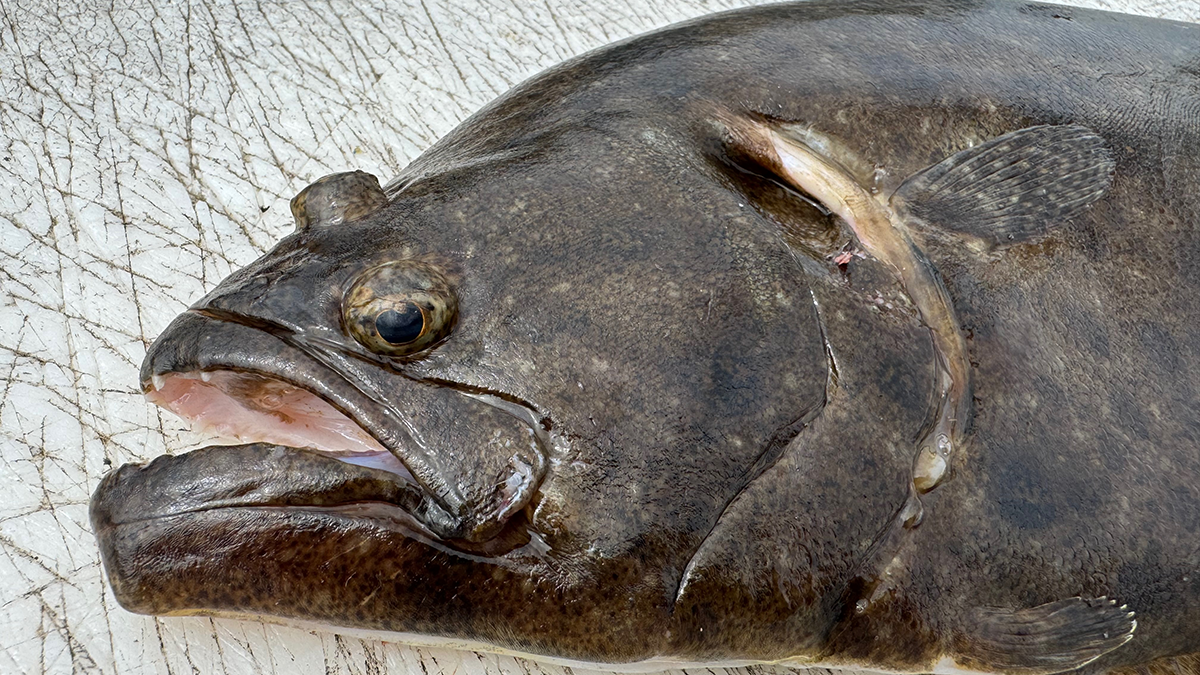
WHAT ARE FLUKE?
Fluke, summer flounder, or Paralichthys dentatus in scientific nomenclature, are flatfish that use their thin profile to hide along the bottom and ambush prey that swims overhead. Born with eyes on both sides of their body, one eye migrates to the left side of their body as the fish grows. Each side of the fish is distinctive; with one being a brilliant, white hue and the other a dark brown, dotted with spots. The darker side helps the fish hide, as they can alter the pigmentation to better blend in on the bottom.
Summer flounder can get quite large, with the all-tackle world record specimen caught off Montauk on September 15, 1975 by Capt. Charles Nappi, though most will be much smaller. A double-digit fluke, one 10 pounds or better, garners bragging rights throughout their range. NOAA Fisheries states summer flounder can be found from Nova Scotia to the Atlantic coast of Florida, but are most common from Cape Cod, Massachusetts to Cape Fear, North Carolina. The southern portion of their range overlaps with the southern flounder (Paralichthys lethostigma), which inhabits similar areas and has similar habits.
Another notable characteristic of fluke is their quality as table fare. Their firm, white flesh is delicious cooked in a variety of manners, including baked, fried, broiled or poached—there’s no wrong way to prepare summer flounder. It is a staple of fried fish houses and world-class restaurants alike.
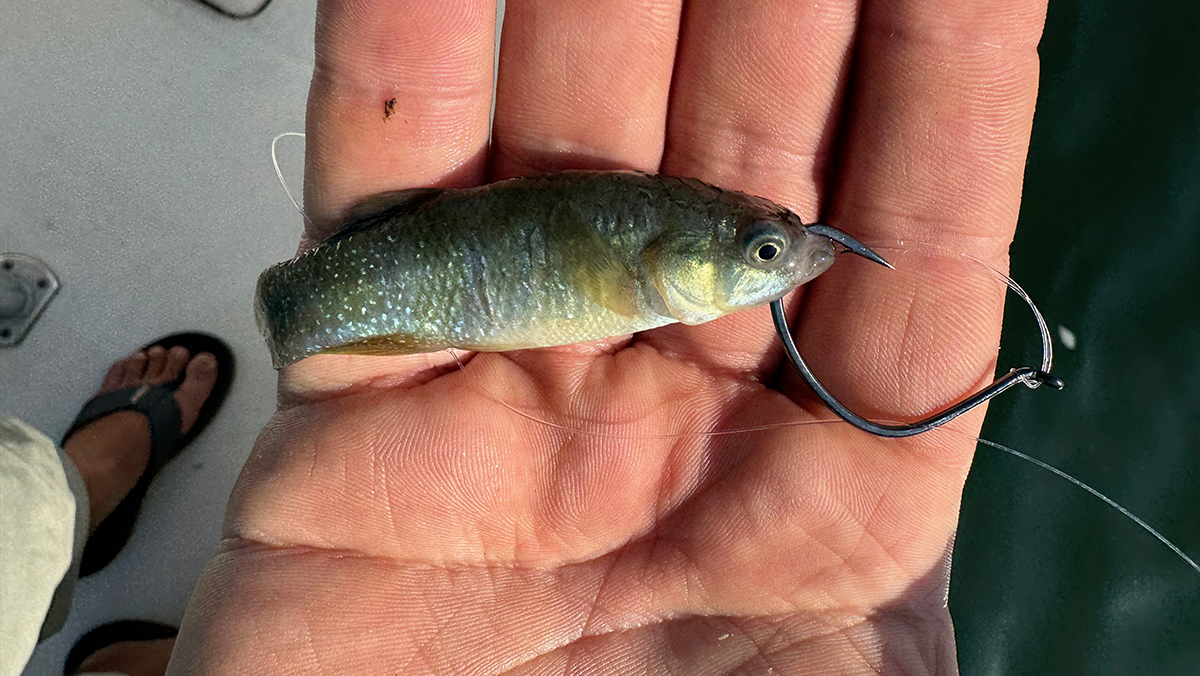
WHAT DO FLUKE EAT?
Fluke are often thought to be lazy, but they are voracious predators that are capable of short bursts of speed that they use to chase down prey. While they use bottom contours to their advantage, they will swim upward through the water column to chase down a meal. And just about anything they can fit in their mouth is on the menu, but small baitfish are the most common. Favorites include Atlantic silversides, sand lances (better known as sand eels), and mummichogs or other killifish. But they show a preference for other species at certain times of the year.
Juvenile menhaden, also known as peanut bunker, are a favorite fluke meal. Some of the biggest specimens each year are pulled from under schools of these 3- to 6-inch baitfish. The same can be said of young-of-the-year bluefish, also known as snappers. Squid are another seasonal fluke delicacy, and when these are inshore chasing sand lance, fluke really key in on them. Shellfish are also on the menu, and grass shrimp are eagerly gobbled up when available. Crabs can also provide a snack.
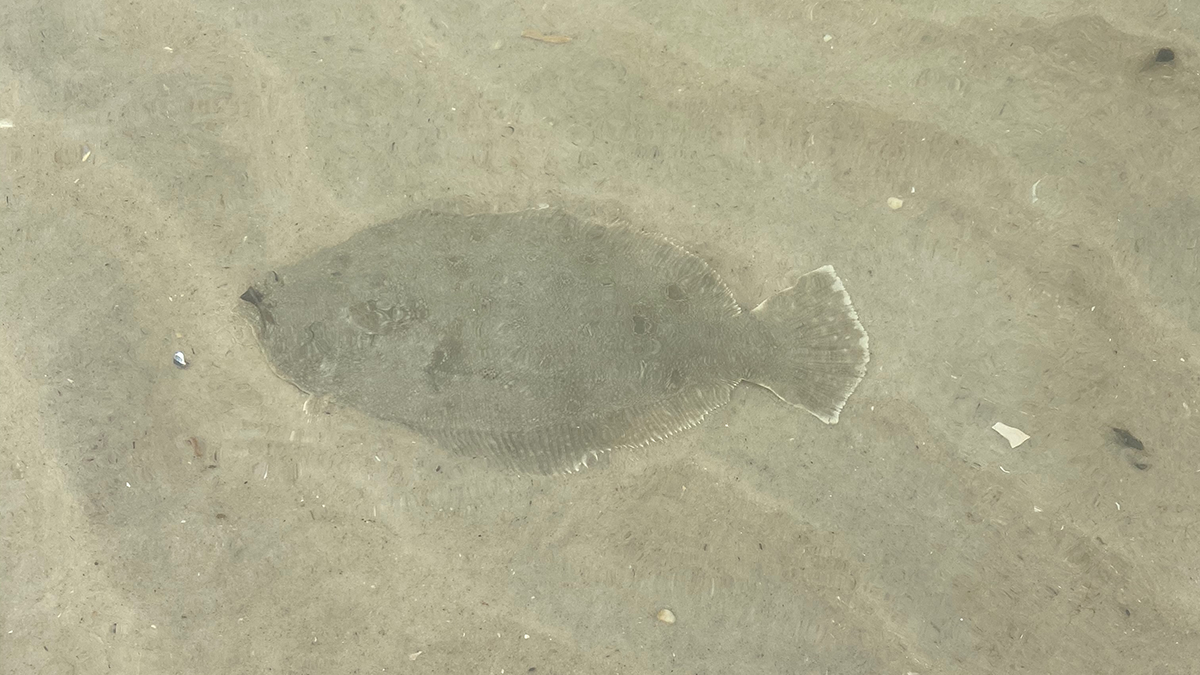
WHERE TO FIND FLUKE
As previously noted, fluke are most common from Cape Cod to North Carolina. Throughout their range, they can be found in a wide variety of habitats, from shallow-water estuaries to deepwater wrecks and reefs. Where they are found varies with the season, though typically they are in the skinny water early on, and head out to deeper water as temperatures rises. This is not a hard and fast rule, though. I often catch larger fluke in the confines of tiny creeks than I do offshore in the 90-foot depths, even in the hottest months.
Like most saltwater fish, summer flounder choose their hangouts using tidal currents. Look for them to be set up to face the incoming flow of water, waiting for bait to be swept overhead. Even small humps can provide cover for them, so don’t overrule even slight contours. Here’s the habitats to look for, and how to fish them.
THE MARSH
Marshes and estuary systems are great places to look for fluke. The tidal creeks present here are great places to start your search; target these on the outgoing tide. Fluke will orient themselves facing into the mouths of creeks or drains on the dropping water and help themselves to the buffet floating above. Look for lips and depressions using polarized sunglasses or your electronics and concentrate on those.
ON THE FLATS
Shallow flats are tailor-made for light tackle fluking. While you’re best suited looking for steep gradients when fishing deeper waters, you can focus on much subtler depth changes on skinny bars and flats. Because they are so thin, fluke can hide in the tiniest depressions—stuff too small to be noted on a depth finder and difficult to see by eye even in crystal clear waters.
Flats such as these won’t have water rapidly sweeping over them except at the very peak tide stages, so fluke won’t be concentrated as they would be near a pinch point like a creek mouth. Instead, they will likely be spread out over the relatively featureless sand or mud bottom and you’ll have to do some drifting to connect.
OPEN BEACHES
Beach fronts are another great place to look for fluke, with the advantage that they offer a great place to relax, too. Here, they will often hold in the trough, just at the water’s edge. Offshore bars hold fluke both alongside and on top, so work these thoroughly. Changes of depth of a foot are a big deal on sand beaches, and you can pull a couple of fish off of the smallest depression. Thoroughly work any cuts you find. Cover as much ground as possible by walking, casting in a fan motion around you as you go.
MAN-MADE STRUCTURE
Jetties are a great place to encounter all sorts of gamefish, and summer flounder are no exception. For fluke, target the groins where the rocks meet the sand. You’re better off standing on the beach and casting toward the jetty, as the fluke will be sitting in the quiet water right at the jetty’s base. Plus, the sharp rocks can do a number on lines if you’re not careful.
Wrecks and reefs, deep or shallow, are great places to look for fluke. Again, they will use the cover to hide, facing into the current. Just be aware that you need a stiff rod when fishing around structure like this. Fluke aren’t terribly strong, but they put on a dogged run when first hooked so you need to turn them ASAP so they don’t break you off. You’ll also lose rigs to snags, so bring plenty of extras.
GO DEEP
As fluke move out of the bays, you can follow them out to deeper water. Absent structure such as a natural or manmade reef, look for steep depth changes. You can find these first using a chart, then key in on them using your fish finder, Speaking of fish finders, don’t expect them to show up on yours. They lack a swim bladder, so the air that typically bounces the sonar signal back isn’t present.
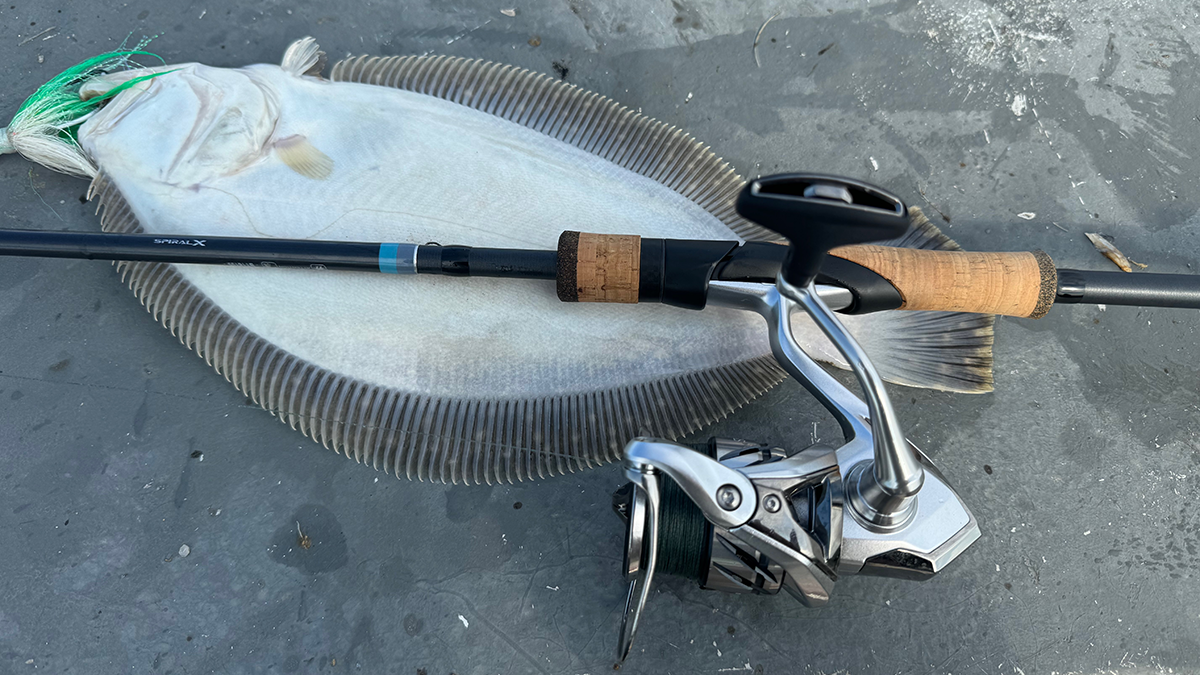
TACKLE FOR FLUKE FISHING
Fluke can be targeted with a wide variety of tackle, from light spinning gear to near-broomstick conventional rods. What you use has more to do with the depths that the fish are in than their size. Even a big fluke doesn’t pull very hard, so the rod is dictated by how much weight is needed to hold bottom.
SPINNING RODS
The most sporting way to catch fluke involves lightweight spinning rods capable of handling weights from 1/2 to an ounce or so. Because you’re just dropping the boat to the bottom and not casting, you can get away with stretching the rod’s rating a bit. You don’t need a lot of drag, so you can get away with smaller reels in the 2500- to 4000-size. Penn’s Slammer or Battle series is a good choice for reels; Fenwick’s inshore lineup of rods makes a nice pairing.
BAITCASTERS
Though many have taken to using spinning gear in recent years, I’m still a fan of baitcasters. Before the advent of saltwater-specific low profile models, I used the round reels that were available at the time. These included smaller Abu Garcia Ambassadeur C3 and Shimano Calcutta models. These days, you’ll probably see me fishing with a Penn Fathom low-profile or an Abu Garcia Revo inshore baitcaster. St. Croix’s Triumph inshore rods work well here, but others will do.
CONVENTIONAL GEAR
If you do fish deep, you’ll need a heavier set up. Choose a medium-power boat rod with a moderate or fast action anywhere from 6 to 7 feet long, like Penn’s Carnage III. As mentioned earlier, you don’t need a lot of drag so just about any conventional reel will do here. I have a bunch of Avet reels, but you certainly don’t need a lever drag. Penn’s Warfare star drag model will handle fluke, and just about any other inshore quarry without breaking the bank.
Whatever gear you choose, spool the reel with braided line. The smaller diameter of braid will let you use less weight to keep your bait on the bottom. Plus, the non-stretch qualities will help you detect light bites and improve hook sets. Thirty percent stretch isn’t a big deal in 10 or 20 feet of water, but if you’re plying the 90 foot depths that amounts to almost 30 feet of stretch. Use a fluorocarbon leader, both to help hide your line and to provide a measure of abrasion resistance.
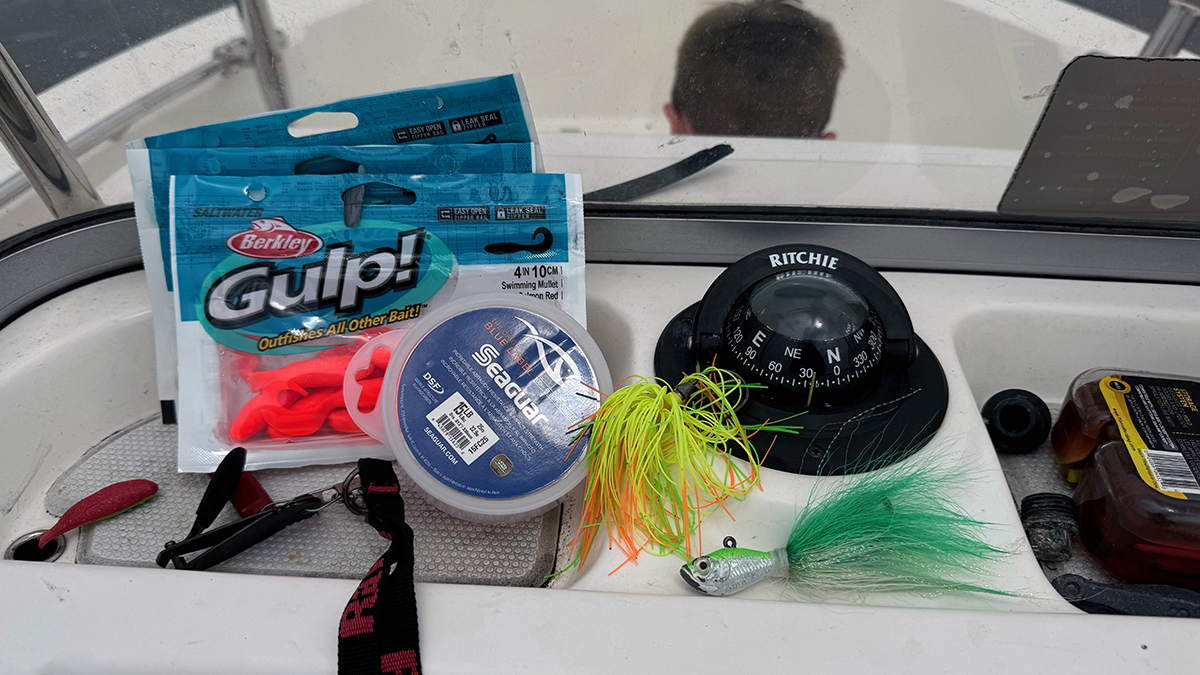
BAITS AND RIGS FOR CATCHING FLUKE
Natural baits are often the most productive when fishing for fluke. When they are around, it’s hard to beat any of the baits mentioned earlier. Local spearing (silversides), sand lances (sand eels), and squid both stripped and whole, are perennial favorites usually available in local tackle shops.
CHICKEN RIG
There are a few different ways to rig for fluke. The easiest is the so-called “chicken rig,” which consists only of a piece of leader material with a dropper loop tied about 10 inches up from the bottom, where another loop is tied. The top loop is fitted with a hook, and the weight goes on the bottom loop, keeping the bait drifting at just the right height. I like Gamakatsu’s shiner hooks in 3/0 to 5/0 depending on the size of the bait, but anything with a wide enough gap should work.
BUCKTAILS
Another productive method to target fluke is jigging. Set up for this is much the same manner as the chicken rig, but substitute a bucktail for the sinker on the bottom. This gives you double the opportunities to entice fluke. Depending on the day, either the bucktail or teaser will be more productive. Bucktails like the ones by Spro with the line tie further back are ideal for vertical jigging, and work well here. Again, use as light as you can get away with.
FAKES
While natural baits are great, they require some care to use. They have to be purchased right before you leave, and kept cool throughout the day. This certainly isn’t a deal breaker, but Berkley’s Gulp! seems to have almost as much fish-attracting power as the real thing, without the storage considerations. I have a few bags of the Gulp saltwater swimming mullet, Gulp saltwater grubs, Gulp saltwater shrimp stashed on my boat. They are ready to go whenever we decide to target summer flounder, and they hold up better on the hook than natural baits. Grab a bunch in different colors and see what works best for you.
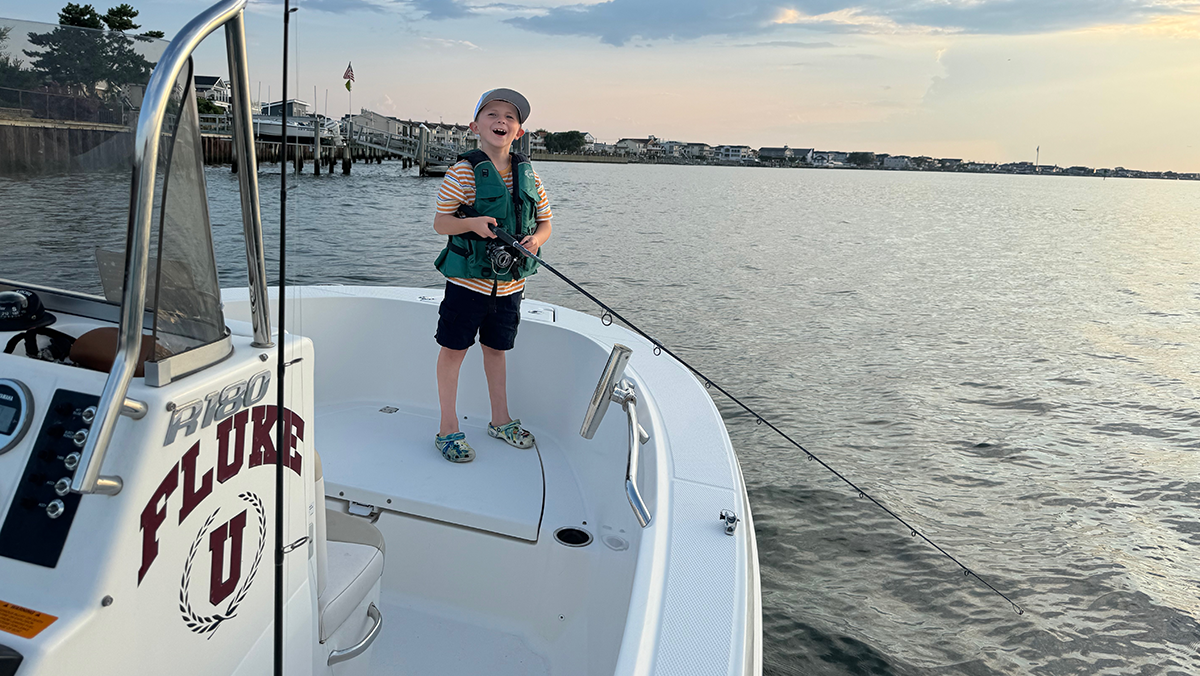
FROM SHORE OR BY BOAT
As with most things fishing, targeting fluke from a boat can be more productive than chasing them on foot. That said, you can still catch plenty of summer flounder from shore. If you can walk to any of the estuary or salt marsh habitats mentioned in the “where to find fluke” section you’re sure to score. Beaches, jetties, and piers are also great places to try your luck. When land bound, you can up the odds of connecting by casting a bucktail/teaser combo in a fan pattern around you and slowly hopping it back in.
If you do have access to a boat, you want to use it to drift over productive areas. Hopefully, you can keep your drifts between 0.5 and 1 miles per hour, that seems to be the sweet spot in my experience. The speed at which the boat will move is determined by the tide and/or the wind. If they are working together, the boat will move quickly. If they are working against each other, the boat might not move much at all. Use your outboard or trolling motor to maintain these speeds, using it to accelerate or slow as needed.
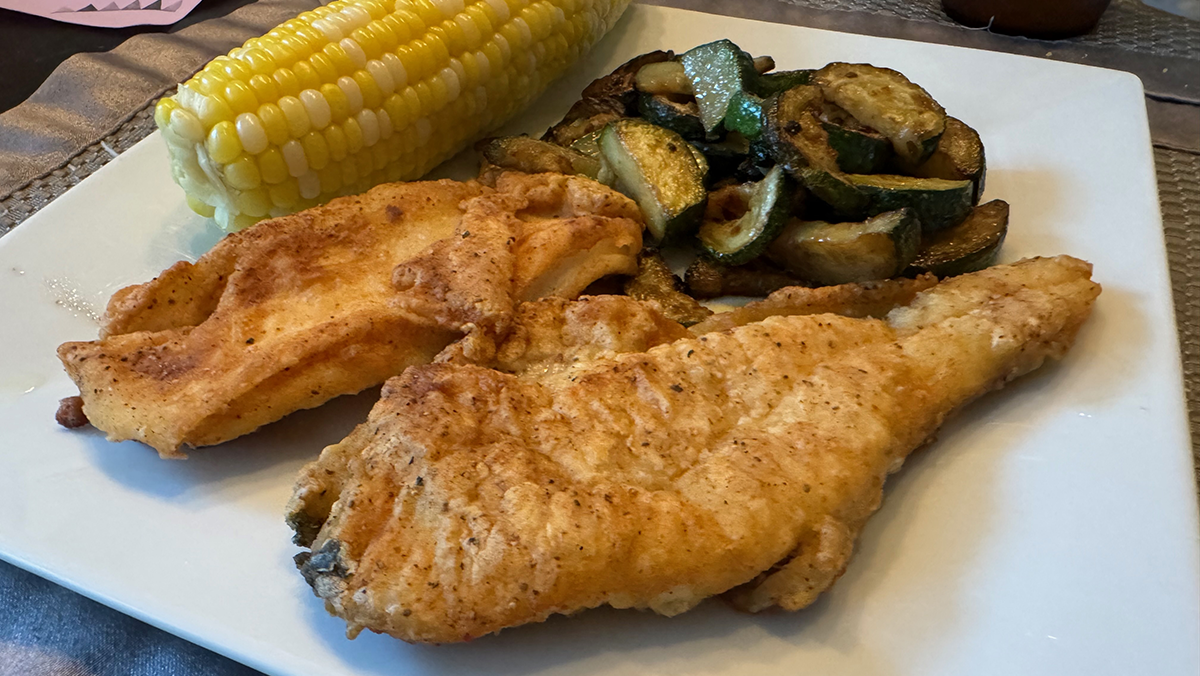
EATING FLUKE
As mentioned earlier, there’s really no wrong way to prepare fluke. Because their flesh is so mild, simple recipes are often best. My wife and I typically just pan fry our fluke filets in olive oil, giving it a sprinkle of sea salt and a squirt of lemon about halfway through. Fluke cook quickly, so make sure you’re paying attention and remove them from heat as soon as the flesh begins to flake easily when prodded with a fork. You can also bake them, or put them in a foil pouch with some liquid and throw them on the grill. It will be delicious however you go about it.
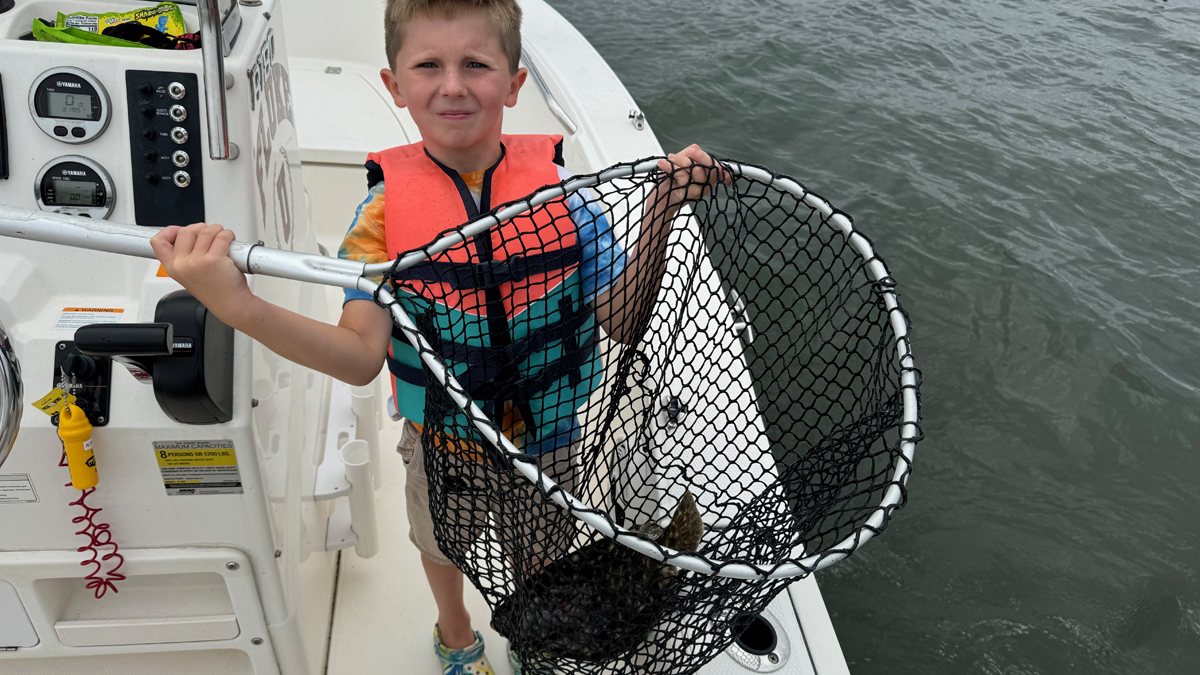
FLOUNDER POUNDER
The next time you’re headed to the coast, consider going after summer flounder. It’s a great time for you and your family. You probably already have the rods and reels needed to get into the action. If you’re not sure where to go, check out a bait and tackle shop in the area you plan to fish, grab some bait or a couple bags of Gulp! and listen to their advice. There’s almost no wrong time to go, with spring, summer, and fall all producing. So get put there.












